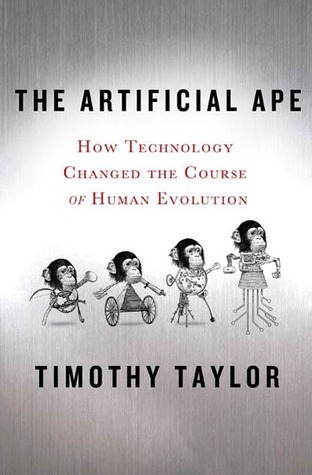What do you think?
Rate this book


256 pages, Kindle Edition
First published July 20, 2010
This book insists that there was an actual moment when we became human. It was a moment long before we became intelligent in any modern sense. It was a moment seized by a female as, for the very first time, she turned to technology to protect her child. In that moment, everything that we were going to become was made not just possible but inevitable. (2)This book is a worthy companion to Hodge's classic The Naked Ape and even goes further to talk about the various artificial environmental factors that shaped humankind's development, those fabricated by humankind itself. And it does so with a lively and energetic narrative that carries the thread of scientific inquiry, as Taylor makes himself a character in this story, not just reporting data but colorfully recounting how and where it was obtained.